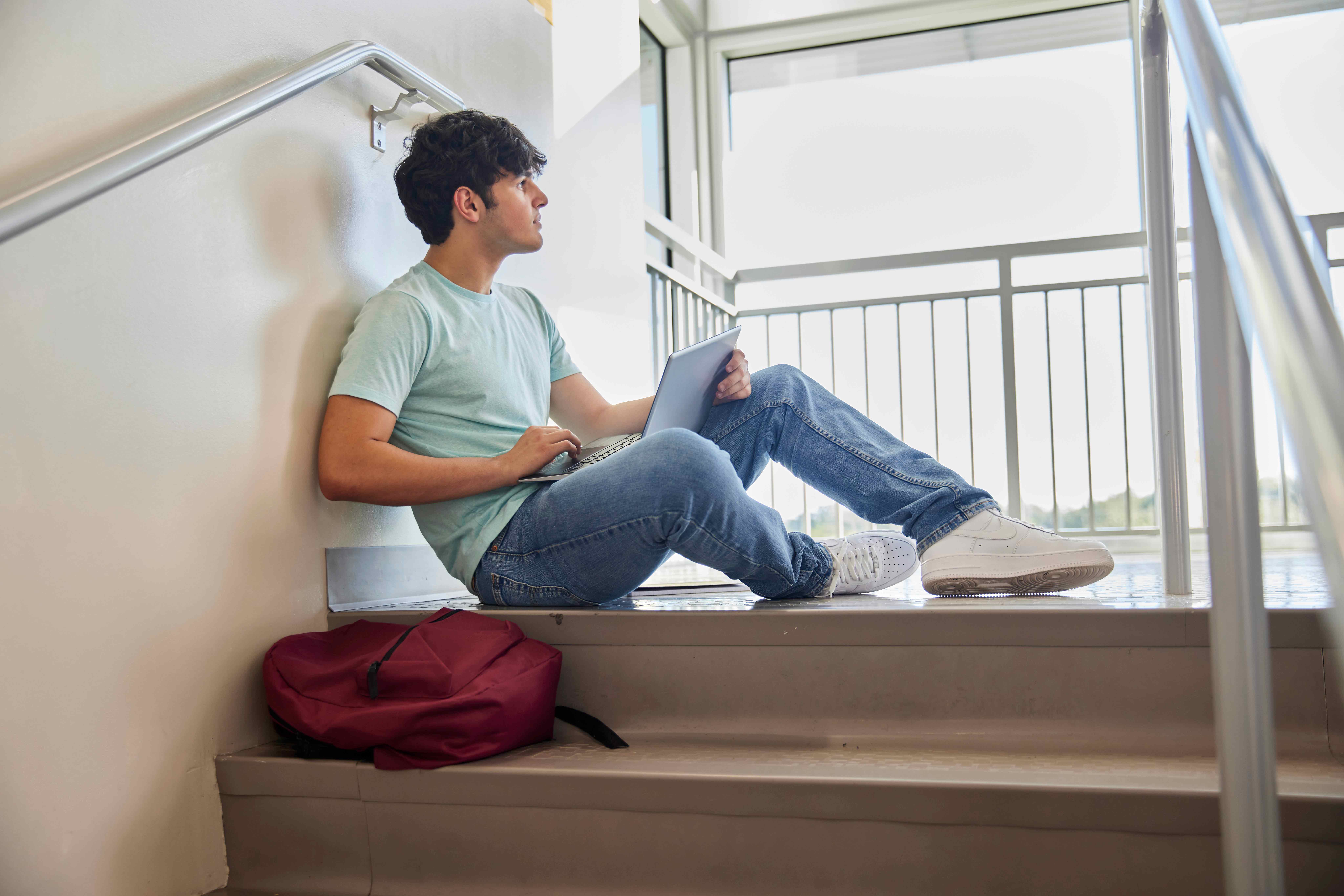Stepping Off the Path of Anxiety
By Laurie Santos
Recently I’ve been thinking a lot about negative emotions. There are feelings like anger and grief that are not-so-nice reactions to events which have actually happened, but there’s one negative emotion that’s prompted mostly by stuff that only exists in our imaginations.
Say hello to anxiety.
“Anxious thoughts are usually in the form of ‘what ifs’,” says psychotherapist and meditation teacher Andrea Wacther. “’What if this happens?’ and ‘What if that happens?’ It's a sense that something is going to go wrong.”
Thankfully, the gloomy scenarios that run through our heads mostly never become reality – but the impacts of all this rumination can take a real toll on our minds and bodies.
“Physically it can manifest as that pit in the stomach, tightness in the chest, shaking, nausea, headache, fatigue, brain fog,” says Andrea. “There's just so many ways that people can feel taken over by anxious feelings and sensations.”
Andrea herself admits to being so ground down by anxiety in her early life that she developed unhealthy behaviors involving alcohol, smoking and food. Her fears and worries triggered her sympathetic nervous system – that fight-or-flight physical response that allows us to react to extreme life-or-death threats.
“I used to just be walking around with fight-or-flight constantly, and constantly thinking and obsessing. It's just that the mind doesn't know the difference between really being in danger and thinking we're in danger.”
It goes without saying that the sympathetic nervous system shouldn’t be constantly activated like this – flooding our bodies with powerful hormones which are supposed to be reserved for an actual existential threat. You may fear your boss, but she’s nothing compared to a hungry saber-tooth tiger.
Many of us are plagued by worries and fears that trigger our fight-or-flight response, or just experience the physical sensations of anxiety in our chests or stomachs and are then overcome with a sense of dread. So we can we do to regulate all these feelings?
“We can't control what thoughts pop up in our minds,” says Andrea. “But we can control how we respond to them.”
Anxiety, by its very nature, can be all-consuming. We can be too upset to think rationally, but Andrea says that there can come a moment of clarity when we realize that we should be controlling our fears, rather than letting them control us.
“So here we are on this path of anxiety. Maybe you've been on it for two hours or two days, or for as long as you can remember. And you come to a fork in the road. And you see that there's an alternate path and those are your anxiety relief tools.”
One of the tools Andrea recommends is self-compassion – and more specifically treating yourself with the gentleness and kindness you would show a frightened child. “Imagine talking to a child that was scared and you yelled at them. Not only would they not feel better, they would feel worse.”
One of the easiest ways to regulate our anxiety involves doing one of the most natural things in the world – breathing. Choosing to breathe slowly and deeply can have immediate and major effects.
“It's literally calming and slowing down our systems. Our breath is shallow when we're anxious. And when we begin to deepen our breath and slow down our breath, it literally calms our system.”
The next calming step Andrea suggests sounds odd… but is surprisingly effective. You can calm yourself with touch. Tenderly touch your stomach or your chest; hold your face; rub your hands; give yourself a hug.
“I hear from students: ‘Oh, please! I'm just gonna rub my hands together and stroke my arms and feel better?’ And then by the end of the lesson, they are actually calmer and more relaxed. So it really works.”
Calming the physical effects of anxiety can give us the space to tackle its root cause – our thoughts. Andrea suggests we try examining our worries and fears as a “neutral observer” might, “observing them without judgment, observing them like you would observe a painting on the wall.”
Andrea also suggests following the self-inquiry teachings of author Byron Katie – who during a mental health and addiction crisis suddenly realized that her anxiety might not be an accurate reflection of her actual circumstances. Byron then set out a checklist of questions we can all use to interrogate an anxious thought.
- Question 1: Is it true?
- Question 2: Can you absolutely know it's true?
- Question 3: What happens when you believe that thought?
- Question 4: Who would you be without the thought?
The checklist forces us (twice) to question whether our anxieties are based in fact. It then asks us to reflect on the harmful effects of believing these thoughts. And finally we are invited to imagine how much better we’d feel without the anxiety.
Andrea has seen the benefits of this approach first hand. “It really is one of the keys to breaking free from the thoughts. Because it’s so easy to think that our problem is what's going on in the world. But the problem is what we think about what's going on in the world. Certainly there are real-life issues, but when our thinking is clear and present, then the problems lessen and the anxiety really diminishes.”
Stay safe,
Laurie
